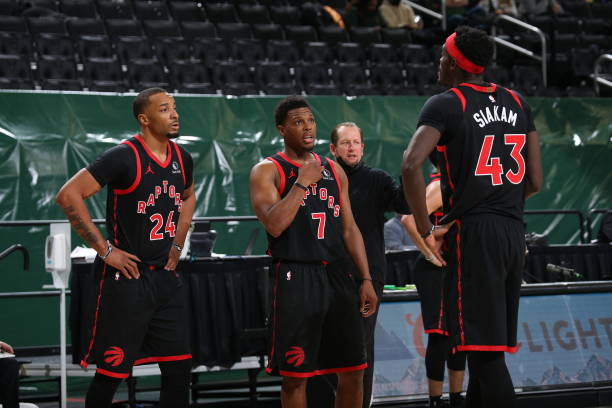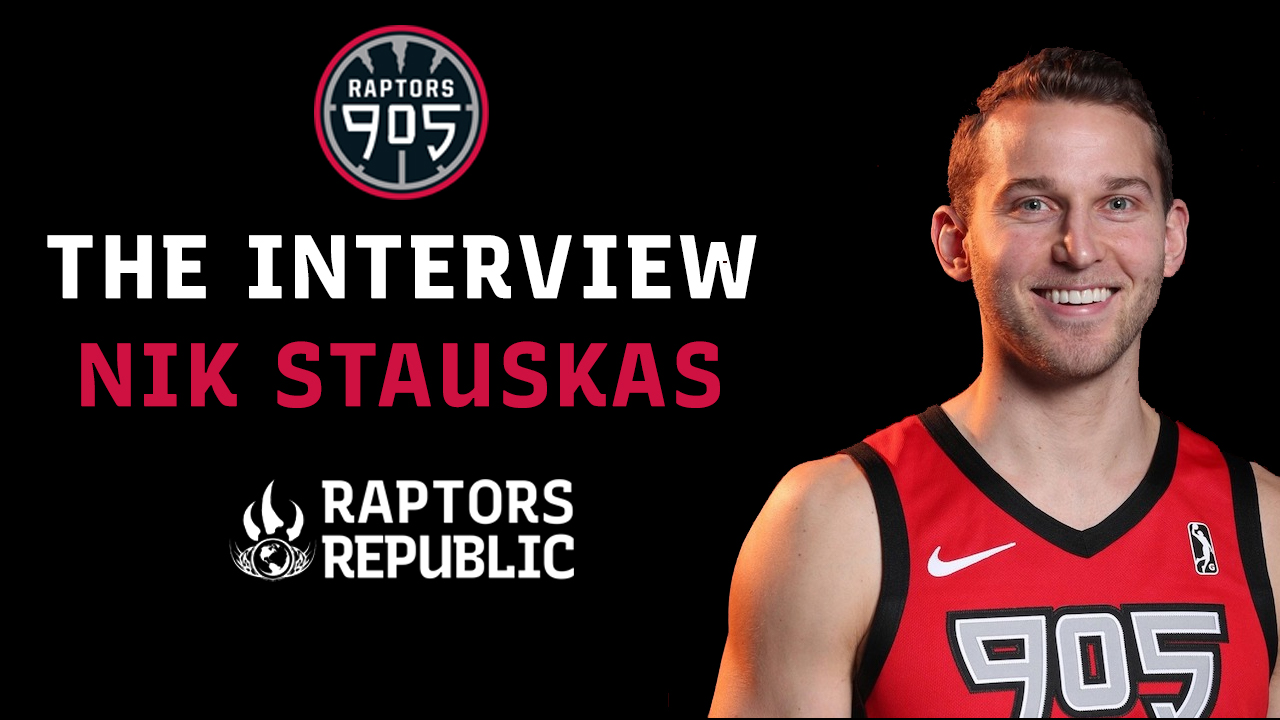This season’s 2-8 start was one of the roughest in recent memory for Toronto Raptors loyalists, reminiscent of the less-than-stellar Andrea Bargnani-era that many would prefer to shake off. But shaking that losing habit is exactly what this incarnation of the Raptors did, going 14-8 in the following weeks. They accomplished the hot streak despite lacking a consistent interior presence.
So why exactly is there so much chatter about trade talk?
Rebounding. Yes, there are valid concerns about cleaning the glass. Aron Baynes is to interior defense what Mariah Carey is to interior defense. Alex Len was waived a month ago. And while Chris Boucher has made significant strides this season, at six-foot-nine and 206 pounds, he isn’t big enough to counter behemoths such as Joel Embiid, Nikola Jokic, or Anthony Davis in the paint. There’s a void in the middle of the paint, but a major trade isn’t necessary and could do more harm than good.
Instead, what if the Raps fully embrace small ball this year?
Five years ago, only 13 teams averaged 100 or more possessions a game. So far this season, only the New York Knicks aren’t meeting that mark. It’s a sign that teams are playing quicker. That’s one effect of the dedication to small ball that has become popular in the NBA. Nick Nurse leaned into his inventive instincts when the Raptors faced the Milwaukee Bucks on Feb. 16 and deployed a small starting lineup. In fact, it felt long overdue because all five starters fit exceptionally into small-ball schemes with shared attributes like speed, agility, three-point shooting, and defense. Kyle Lowry and Fred VanVleet assumed their usual starting roles in the backcourt, and in the frontcourt, OG Anunoby and Pascal Siakam were joined by… Norman Powell. They went small and played at a pace of 105 against a team with the reigning MVP and DPOY, and won decisively, 124-113.
Unfortunately, Lowry sat out for the next four games (Milwaukee again, Minnesota, and Philadelphia twice) and the pace dropped to an average of 95.6 possessions per game, slowest in the league over that stretch. Yet, Toronto finished those games with a record of 3-1 because even without Lowry, they found ways to facilitate. VanVleet led the team in assists against the Bucks with eight, then Siakam paced Toronto with six helpers in Minnesota. The two of them combined for 17 to overcome the east-leading 76ers and then 15 in a well-fought loss. In other words, the Raptors controlled the pace by trusting one another and building chemistry in the process; outside of a down offensive game against the Minnesota Timerwolves, Toronto’s small-ball offense has been promising, whether playing fast or slow.
The other benefit of small ball is that Toronto’s defense goes to another level. Through 32 games, the Raptors are forcing opponents to shoot 45.2%, seventh best in the NBA. But over the last four games, opponents’ shooting rates have dropped to a league-low 39.6%, the only mark below 40%. It is a relatively small sample size, but the potential is there. What may be lost in rebounding certainty is made up for in forcing misses.
In that second win against Milwaukee, VanVleet and Siakam led the team in minutes with 40 and 38, respectively. Shockingly, DeAndre’ Bembry played the third-most minutes of any Raptor that night with 37. He only attempted three shots and scored five points. But the numbers didn’t reflect his hustle.
Atlanta considered DeAndre’ Bembry an insignificant part of their future so they let him walk in free agency. He’s become a $1.7 million bargain for the Raptors. He gets in passing lanes and anticipates where the ball is going. He’s an agent of chaos sowed into opposing teams.
There’s a lot the Raptors still don’t know about Bembry and as a result, there are multiple ways he can be used. On offense, he’ll likely be the last option for every lineup he’s in, which isn’t an issue for a team that has six players scoring at least 13 points per game. He takes a lot of standstill jumpers. Bembry also uses others’ spacing to create for his teammates, with the best assist-to-turnover ratio on the team outside of Lowry and VanVleet. His place in the offensive hierarchy also allows him to exert most of his energy on the defensive end, and above you see him jumping on a double team and then hustling back to contest Donte DiVincenzo’s 3. He reads whether or not to bite on Khris Middleton’s jumper. He doesn’t, and Middleton is forced to make a difficult mid-air pass.
While there are opportunities to improve team rebounding, defense is something the Raptors can lean on. If Toronto is just starting to figure out what their capabilities are, the rest of the league should be scared. The Raptors have a way of obtaining low-cost players in free agency, convincing them to buy into the team’s culture, then maximizing their capability. This small-ball defense is the precise reason other teams are envious of the Raptors’ player development, so there are negatives to trading any player who’s starting to show his commitment to playing hard.
Now, is it insane to think Masai Ujiri and Bobby Webster won’t peek into the bargain bin again before rosters are finalized? I don’t think so’ in fact, that’s the best approach to take. Why mess with the team when they’re starting to look like a cohesive unit, winning seven out of their last 11 games and just beginning to gel? The best seven-man rotation includes Lowry, VanVleet, Siakam, Anunoby, Norm, Boucher, and Bembry, based on the fact that they lead the Raptors in Win Shares. Finding a more effective eighth man is the last piece of the puzzle.
The Raptors could take a flier on a free agent like Dewayne Dedmon, if they believe he would be an upgrade on Baynes. If Nerlens Noel could be available for the price of Baynes and a second rounder, his rim protection and vertical spacing could be important additions to Toronto’s roster. After all, Ujiri has fleeced the Knicks on multiple occasions before. Any trade that changes the roster more than those types of additions isn’t worth messing up this chemistry. For example, if a trade is for someone higher profile, such as John Collins, who’s rumoured to be available, it would likely have to include multiple picks, multiple members of the core seven, or a combination of both. Sacrificing the future on a short-sighted move doesn’t make sense, especially since the Raptors are just starting to play well.
It’s no secret that Lowry and Powell’s contracts are both expiring after this season. That doesn’t mean they should be trade bait. Lowry’s the leader and the engine that keeps the Dinos in contention. Powell is beginning to show that he could be a reliable scoring option for years to come. The culture here is established, and nobody on the team or in the organization considers losing to be acceptable. That offers value in itself.
There’s no need for a major shake up. The Raptors are red hot right now, and it looks like they’re starting to find their groove. By leaning into small ball and with the revelation of Bembry, Toronto has turned its season around. There is likely no trade which would immediately catapult Toronto above the rest of the league. If that’s the case, let’s take a page out of VanVleet’s book. I advise you to bet on these Toronto Raptors.
All stats through games on Feb. 23.



